Do you have a question about the Lincoln Electric WELD-PACK 100 PLUS IM546 and is the answer not in the manual?
Details potential dangers and precautions related to electric shock during welding operations.
Explains the risks associated with arc rays and the necessary protective measures.
Covers the dangers of welding fumes and gases and how to manage them.
Highlights risks of fire and explosion from welding sparks and necessary precautions.
Addresses dangers associated with compressed gas cylinders and safe handling practices.
Covers safety precautions for electrically powered welding equipment and grounding.
Details safety considerations for equipment powered by engines.
Explains risks from EMF fields, especially for pacemaker users, and mitigation steps.
Instructions for checking the welding machine and its carton for damage upon receipt.
Guide to recording serial number, model name, and other essential machine details for future reference.
Explains the meaning of WARNING and CAUTION symbols used in the manual for safety.
Details electrical, output, and physical specifications for the Weld-Pak 100 welder.
Crucial safety guidelines to follow before and during the installation process.
Lists and illustrates the main parts of the Weld-Pak 100 for identification.
Recommendations for choosing an appropriate and safe location for the welding machine.
Instructions on how to connect the work cable, gun cable, and other output terminals.
Step-by-step guide for properly installing the work cable.
Procedure for connecting the welding gun's cable and trigger leads to the machine.
Guidance on connecting a shielding gas supply for MIG welding applications.
Important warnings and safety measures for handling and connecting gas cylinders.
Details on connecting the power input, including voltage, amperage, and code requirements.
Essential safety warnings and precautions to observe during welding operations.
Overview of the Weld-Pak 100's features, design, welding capabilities, and limitations.
Explanation of the machine's controls, including power, wire speed, and voltage adjustments.
Step-by-step instructions for loading welding wire onto the machine's spool.
Guidance on adjusting the spool's friction brake and threading the wire through the gun.
Instructions for performing a welding operation, including setup and execution.
Procedure for maintaining the welding gun's tip and nozzle for optimal performance.
Information on selecting and using appropriate welding processes and materials.
Steps for reconfiguring the machine to feed different sizes of welding wire.
Specific instructions and recommendations for performing Gas Metal Arc (MIG) welding.
Explanation of the machine's internal protection mechanisms against overload conditions.
Highlights dangers of welding fumes and necessary precautions for health and safety.
Details on how the electrical circuit functions during the arc welding process.
Description of the arc characteristics for self-shielded flux-cored wire welding.
Description of the arc characteristics for Gas Metal Arc (MIG) welding.
Helps users choose between GMAW and FCAW processes based on application needs.
Information on identifying and welding common metals like mild steel, aluminum, and stainless steel.
Steps for preparing the machine and settings for self-shielded flux-cored arc welding.
Explains fundamental techniques and positions for effective self-shielded welding.
Reiterates safety precautions for protecting eyes and skin from arc rays.
Detailed steps on how to properly initiate the welding arc.
Guidance on maintaining the proper distance between the contact tip and the electrode wire.
Tips for controlling welding speed by observing the molten metal puddle.
Provides general tips to improve welding performance and ease.
Recommended exercises to develop and hone fundamental welding skills.
Steps for preparing the machine and settings for Gas Metal Arc (MIG) welding.
Explains fundamental techniques, including gun angle and push technique, for MIG welding.
Reiterates safety precautions regarding arc rays when performing MIG welding.
Overview of common welding joint types and their basic characteristics.
Instructions on how to perform a butt weld, including plate placement and gun angle.
Guidance on performing fillet welds, emphasizing the correct gun angle and electrode placement.
Describes techniques for vertical-up and vertical-down welding positions.
Cautionary note about potential weld failures when using thick materials beyond recommended limits.
Techniques for controlling molten metal deposition in vertical-up and overhead welding.
Guidance on performing vertical-down welds, focusing on speed and shallow penetration.
Identifies common welding problems like spatter, porosity, and poor penetration, with solutions.
Tips for correct gun handling to prevent wire feeding issues and cable damage.
Recommended settings for various welding wires and steel thicknesses, including polarity.
Critical safety warnings regarding electrically live components during operation.
Information on optional accessories like utility carts and conversion kits.
Steps required to convert the welder for Gas Metal Arc (MIG) welding applications.
Essential safety measures to take before performing any maintenance on the welder.
Guidelines for regular cleaning and checks of the wire feed and fan motor.
Identifies compartments requiring minimal or no user maintenance.
Instructions for cleaning the gun cable, contact tips, nozzles, and gun tubes.
Procedure for removing and installing new contact tips for the welding gun.
Steps for reversing or replacing the drive roll to accommodate different wire sizes.
Procedure for replacing the gun cable liner to ensure proper wire feeding.
Information on the components of the gun handle and how to access them for maintenance.
Instructions on how to effectively use the troubleshooting section to diagnose and fix problems.
Guides users through common output issues and their potential causes and solutions.
Addresses issues related to wire feed not working correctly, including drive rolls and liners.
Helps diagnose and resolve low or no gas flow issues when using MIG conversion.
Covers common welding issues like unstable arcs, poor starting, and incorrect settings.
Provides a detailed wiring diagram of the Weld-Pak 100 for reference and troubleshooting.
Crucial safety warning about high voltage hazards present within the machine.
Introduces the parts manual and provides guidance on ordering replacement parts.
An exploded view showing the overall assembly of the Weld-Pak 100 components.
Lists and illustrates parts related to the wire drive assembly and motor.
Details the components that make up the front panel and control interface of the welder.
Lists parts for the rectifier assembly, cooling fan, and mounting bracket.
Details the components associated with the machine's center panel and wiring connections.
Lists replacement parts and accessories specifically for the Magnum 100L welding gun.
Provides essential safety warnings and instructions in multiple languages for proper equipment use.
Outlines the terms and conditions of the warranty provided for Lincoln Electric welding equipment.
Details how to obtain warranty service and the process for warranty repairs.
Specifies conditions under which the warranty may be voided and limitations on liability.
| Input Voltage | 115V |
|---|---|
| Input Phase | Single Phase |
| Input Frequency | 60 Hz |
| Input Current | 20 A |
| Duty Cycle | 20% at 100A |
| Welding Thickness | Up to 3/16 in. |
| Wire Size | 0.035 in |
| Dimensions | 18 D in |
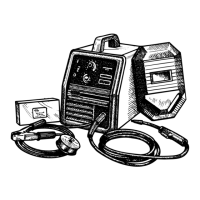
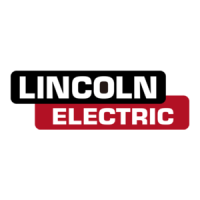

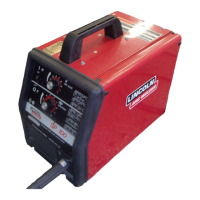

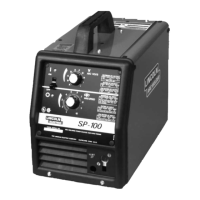

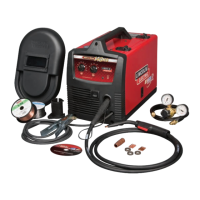

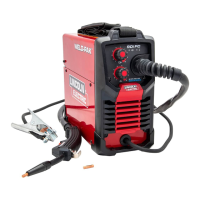
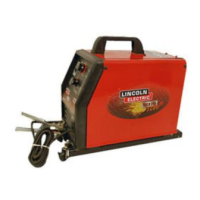
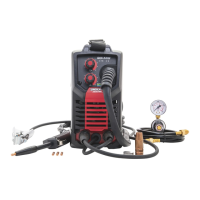
